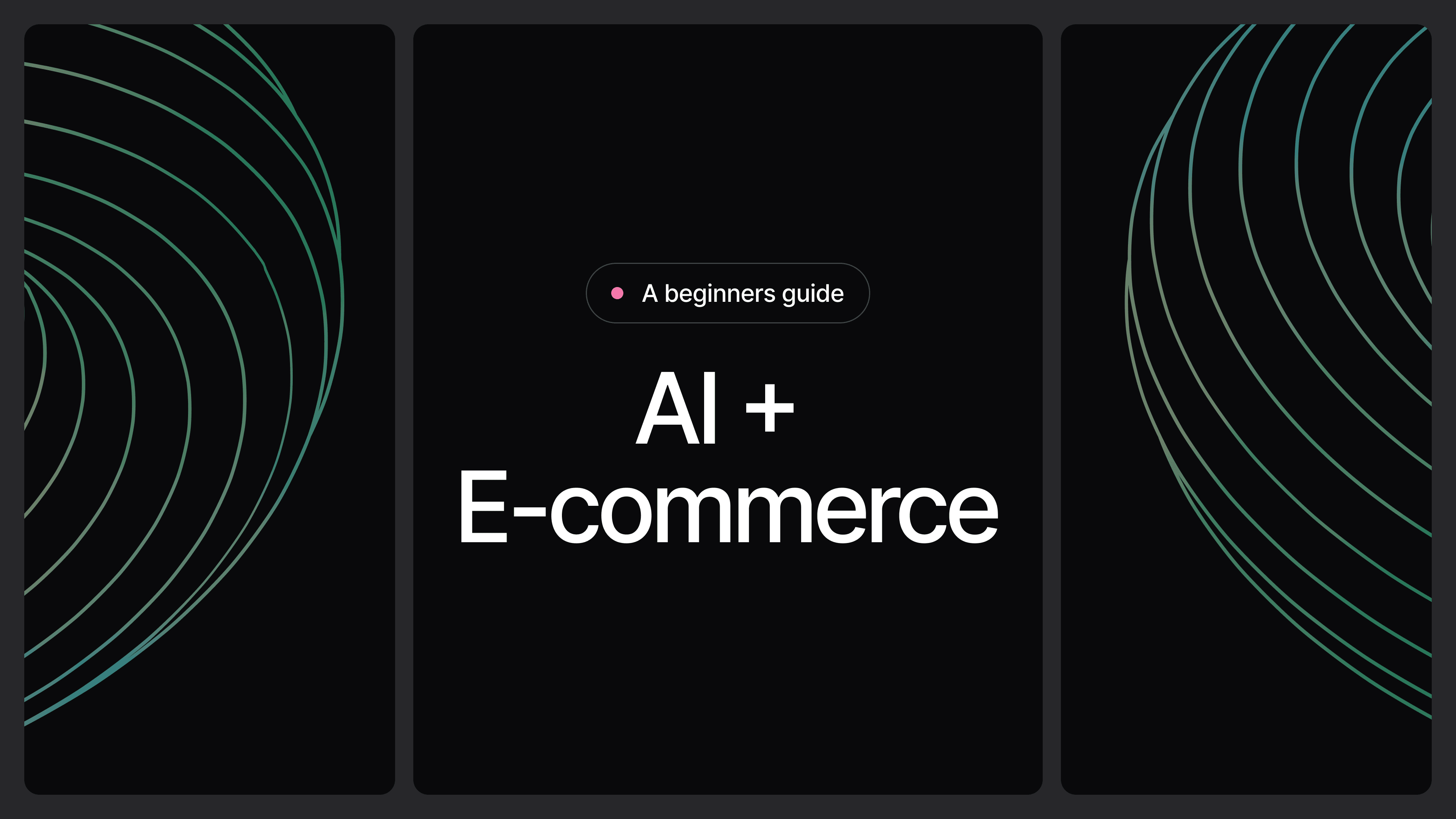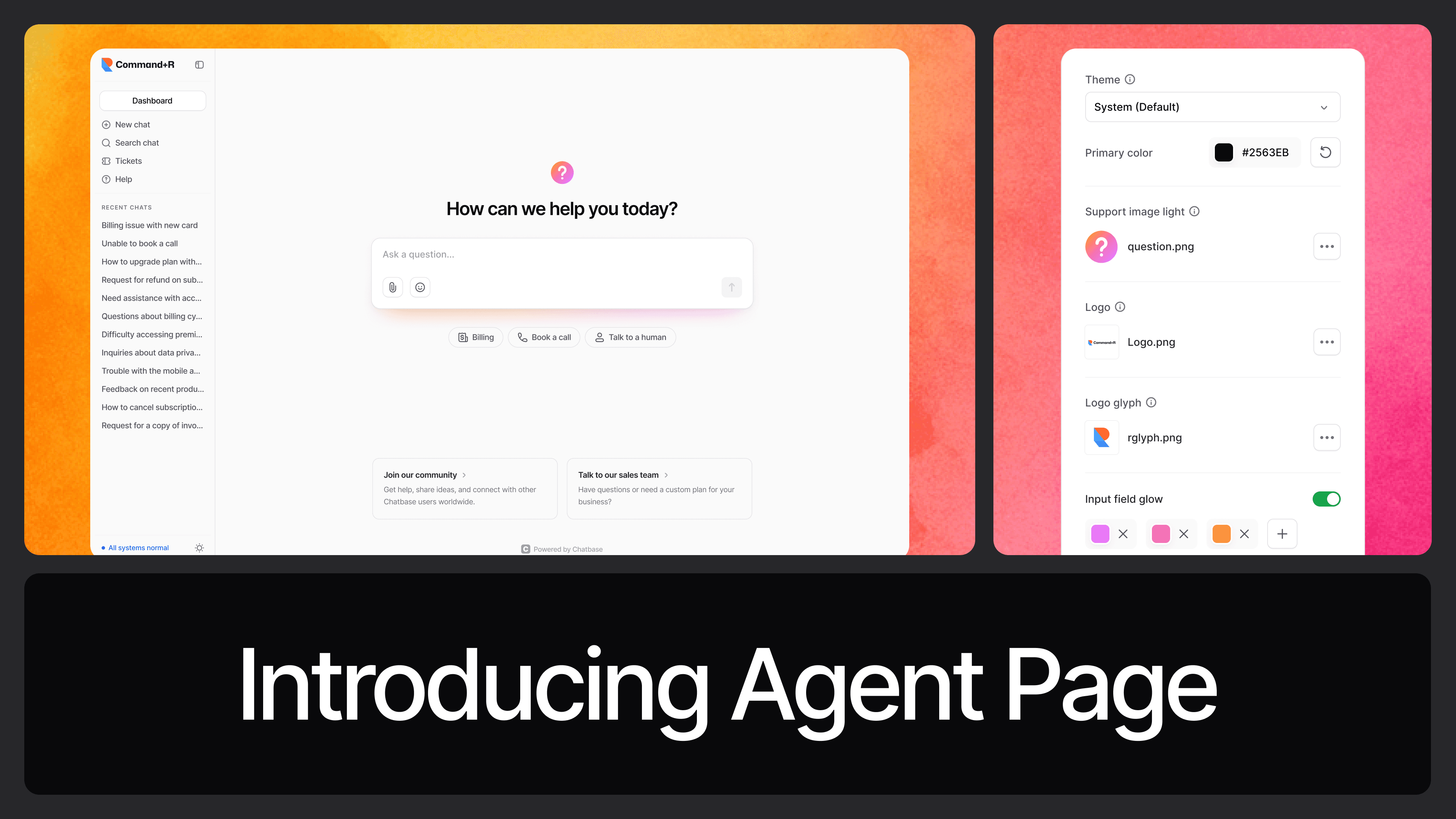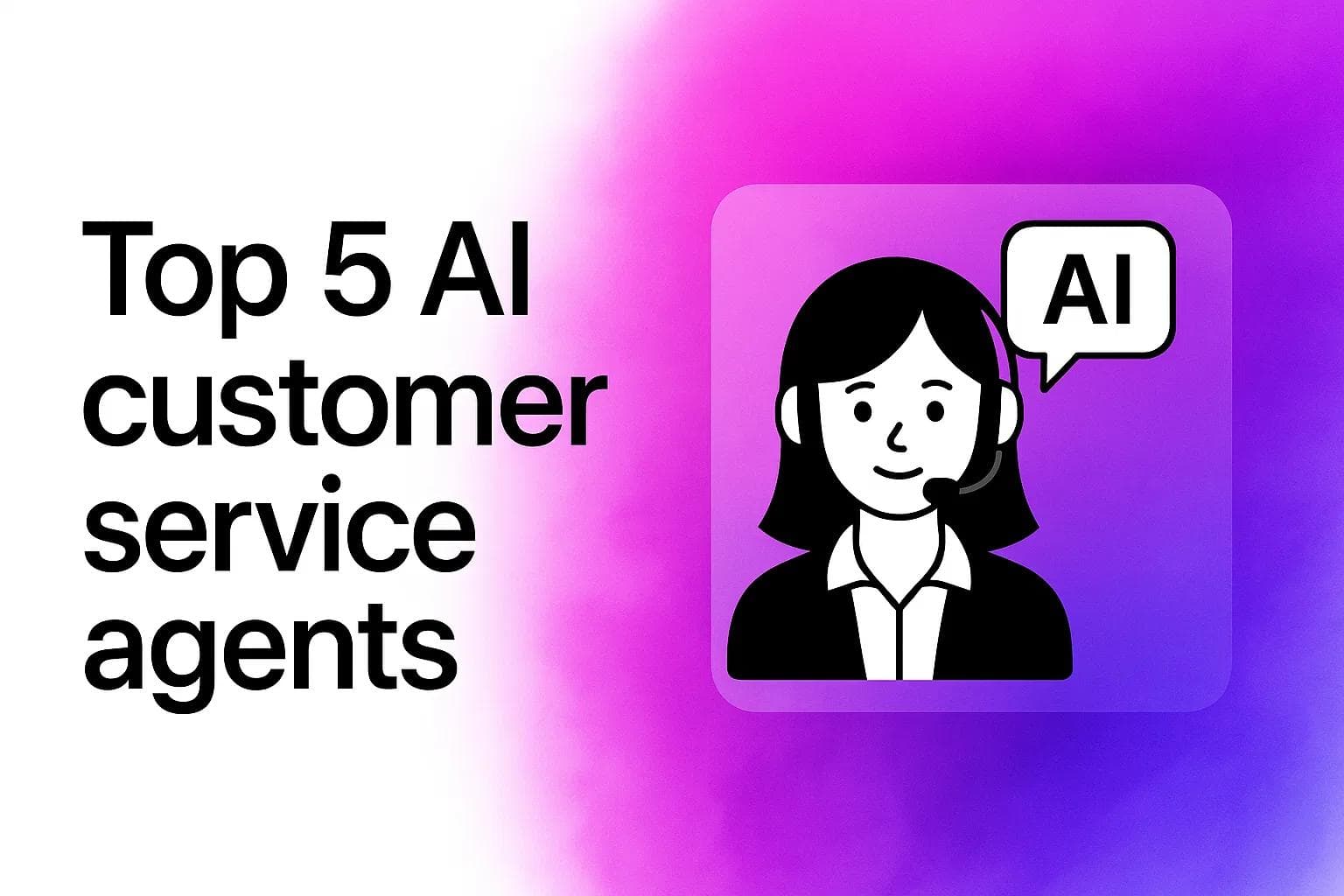AI in E-commerce: How to Get Started
Max T
May 20, 2025
9 min read

AI is starting to show up everywhere in e-commerce, and for good reason.
It helps online stores work faster, support customers better, and make smarter decisions without needing more hands on deck. Think 24/7 chat support, personalized product suggestions, and fewer repetitive tasks for your team.
You don’t need to be a tech company to use it. Tools like Chatbase make it easy for any store, big or small, to build AI support that actually feels helpful, not robotic.
In this guide, we’ll walk through how AI fits into e-commerce, what it can do for your store, and how to get started without overcomplicating things.
Benefits of Using AI in E-commerce
AI isn’t some futuristic add-on anymore. In e-commerce, it’s quietly powering some of the best shopping experiences online, often without users even realizing it. When done right, it can give smaller stores the kind of scale, personalization, and speed that was once only possible for big players.
Let’s break down how AI brings real business value:
1. 24/7 Customer Support
Customer expectations have shifted. They don’t just want quick responses—they expect instant ones. But hiring a support team to be online 24/7 isn’t realistic for most stores.
That’s where AI chatbots shine. They can instantly handle things like:
- Order status updates (“Where’s my package?”)
- Return and refund requests
- Product availability checks
- Basic troubleshooting
What’s often overlooked is the tone and depth these bots can offer. With tools like Chatbase, you're not just throwing a generic bot at your customers. You can train it on your FAQs, documents, and store tone, so it actually sounds like your brand. That makes conversations feel natural, not robotic.
We’ve seen small stores cut down response time by 80%, just by letting a bot handle the top 10 most common support questions. And for customers, that speed alone can make the difference between a bounce and a sale.
2. Personalization That Actually Works
There’s a big difference between spammy “recommended for you” carousels and real personalization.AI helps bridge that gap by analysing user behaviour in real time including what products they view, linger over, or abandon and surfacing tailored product information that aligns with their interests. Optimizing the ecommerce product listing based on shopper behavior ensures that customers see the most relevant items, increasing engagement and sales.
With this context, AI can:
- Suggest relevant products before a user even finishes typing
- Send smart follow-up emails based on browsing history
- Offer discounts to users who seem hesitant to check out
Imagine a customer browsing hiking gear. They’ve clicked on boots, viewed two jackets, and spent 4 minutes on a sleeping bag product page. An AI-powered engine might recognize this pattern and show a camping bundle offer; boots, bag, and thermal jacket with a 10% off combo, just as they’re about to exit the page. That’s the kind of intelligent selling that drives up AOV (average order value) without being pushy.
3. Reduces the Load on Human Teams
Customer service teams often spend a huge chunk of their time answering the same five questions. AI can handle that front line, freeing up your human team to step in only when needed.
But it doesn’t stop at chat. AI tools can:
- Automatically categorize support tickets
- Detect tone or urgency in messages
- Summarize long email threads or chat histories before handing them off
It’s like giving your team a personal assistant that reads, filters, and organizes everything before they ever see it.
This has a compound effect: faster replies, less burnout, and better-quality responses when humans do step in.
4. Data That Tells a Story
E-commerce platforms generate a lot of data. But without context, it’s just noise. AI helps turn that noise into insights:
- What are people asking about most frequently?
- Are certain products generating more support tickets than others?
- What are the common objections or pain points that show up before a user abandons a cart?
These patterns aren’t always obvious. But with an AI like Chatbase that can analyze conversations, tag common topics, and surface real trends, you start to get a pulse on customer sentiment—straight from the words they’re using.
This kind of insight can guide everything from UX fixes to product development.
5. Builds Loyalty Through Relevance and Speed
The formula for loyalty isn’t a secret: solve problems fast, recommend things people actually want, and treat every customer like they matter.
AI helps make this scalable. From timely nudges (“Your refill is due”) to proactive help (“Need help completing your order?”), it lets you show up at the right time with the right message.
Customers remember that. Especially when it feels thoughtful and frictionless.
Common AI Use Cases in E-commerce
AI is already baked into many successful e-commerce operations. From improving search results to handling post-purchase questions, it’s not just about cutting costs, it’s about improving customer experience at scale. Online stores are using platforms like EasyCommerce to make their operations easier with AI and create personalized shopping experiences.
Here are five high-impact use cases:
1. AI Chatbots for Real-Time Customer Support
This is usually the first AI-powered feature many stores implement—and for good reason. A well-trained chatbot can handle FAQs, help with order tracking, provide return instructions, and even answer product-specific questions.
A good chatbot shouldn't just reply, it should understand intent. For instance, if a customer types, “Do you have something like Nike’s running shoes but cheaper?” a good chatbot won’t just keyword-match. It’ll understand what the customer wants and suggest relevant alternatives.
Chatbase makes this kind of intelligent interaction accessible. With just a few clicks, e-commerce stores can create branded AI chatbots that know their product catalog, tone of voice, and policies. It’s built to be fast, helpful, and customizable without necessarily needing a dev team.
2. Personalized Product Recommendations
AI analyzes browsing behavior, purchase history, and even real-time engagement to serve up personalized product suggestions. It's not just about pushing bestsellers, it’s about context. A user looking at hiking boots might get a backpack recommendation, while someone browsing yoga mats might see grip socks or water bottles.
3. Smart Search and Filtering
AI-enhanced search goes beyond basic keyword matching. It interprets vague inputs, understands synonyms, and even learns from common queries. So when someone types “winter jacket that’s not too bulky,” the system can surface relevant results, even if those exact words aren’t in the product titles.
This leads to better discovery and lower bounce rates.
4. AI-Powered Email and Retargeting Campaigns
AI helps craft smarter email flows, everything from abandoned cart nudges to personalized promotions. It determines the best time to send, which products to highlight, and even how to phrase subject lines for better open rates.
This keeps users engaged without overwhelming them. But even the most engaging emails won’t matter if they don’t reach the inbox, which is why a DMARC checker is essential for deliverability and brand protection.
5. Post-Purchase Engagement and Support
AI continues to add value after checkout. Whether it’s answering “Where’s my order?” in real time or suggesting care tips based on the item purchased, post-sale AI experiences can significantly boost loyalty and satisfaction.
The key is timing and tone. Reaching out when it makes sense, and saying something actually helpful.
How to Start Using AI in Your E-commerce Business
Getting started with AI doesn’t mean transforming your store overnight. In fact, the businesses that succeed with AI aren’t always the ones using the most advanced models; they’re the ones that start simple, test fast, and build from there.
If you're new to AI, here’s how to approach it the smart way:
1. Choose a High-Impact, Low-Resistance Use Case
The best way to start is by solving a specific pain point. Don’t aim for a full-blown AI rollout. Begin with a single use case that delivers visible value right away like customer support automation, intelligent product recommendations, or even AI-powered search.
For many stores, an AI chatbot is the natural starting point. Why? Because it immediately reduces support volume, speeds up response times, and creates a better buying experience without needing complex integration or dev resources.
Chatbase, for instance, lets you build an AI chatbot that’s trained on your existing site content, FAQs, and past support chats. Setup takes minutes. Impact can be felt within days.
This is your quick win. Start here, learn fast, and expand based on results.
2. Feed It With the Data You Already Own
AI doesn’t work in a vacuum. It learns from patterns—patterns that already exist in your business. You don’t need to create new datasets or reinvent how you operate.
Pull from your existing resources:
- Product descriptions
- FAQ pages
- Previous support tickets
- Customer purchase histories
- On-site search data
If it lives in your store or CRM, it’s fuel for AI. A good tool will use these inputs to deliver accurate, context-aware results from day one. This is why foundational prep matters more than complexity.
3. Match the Experience to Your Brand Voice
AI shouldn’t sound like it came from a tech lab. It should sound like you.
Whether you’re launching a chatbot or generating AI-powered emails, tone matters. If your store is playful, your AI should be too. If your brand voice is calm and professional, don’t let an overly perky bot ruin the vibe.
The good news? Tools like Chatbase let you shape personality, tone, and behavior to fit your brand identity—right down to how it handles complaints or delivers humor. This creates trust, consistency, and a better customer experience.
4. Define What Success Actually Looks Like
You wouldn’t launch a new product without KPIs. The same goes for AI. Set clear metrics early.
Ask yourself:
- Are you trying to cut down average response time by 50%?
- Boost conversions on product pages by 10%?
- Reduce cart abandonment?
Whatever it is, define success in real terms. This helps you evaluate performance and avoid falling into the “we’ve added AI but don’t know what it’s doing” trap.
5. Don’t Overcommit
AI adoption doesn’t have to be expensive or resource-heavy. The best tools today are modular, affordable, and built to scale with your needs.
You can start with free or low-cost plans, test across a few use cases, and expand only when you see results. Avoid trying to AI-ify every corner of your store from the start—it’s a recipe for burnout.
Instead, treat AI like a high-leverage tool: use it when it solves a clear problem and improves either the customer experience or your internal efficiency.
Ready to Get Started?
AI isn’t just for enterprise giants or tech-heavy startups anymore. It’s finally accessible, practical, and customizable enough for every e-commerce business to benefit.
And it doesn’t have to be complicated.
The smartest way in? Start where impact meets ease: with a chatbot. A well-trained AI chatbot doesn’t just answer questions—it becomes a 24/7 sales rep that never takes a break.
We're talking about:
- Upselling and cross-selling products intelligently based on what the shopper is browsing
- Handling objections and nudging hesitant buyers toward purchase
- Recovering carts with timely, human-like pushback
- Guiding users to the right products with smart filtering and questions
- Even executing actions like checking order status, or triggering workflows
And with Chatbase, all of this becomes plug-and-play. You can train your chatbot using the content you already have—product descriptions, FAQs, blog posts, past support tickets—and it instantly becomes a brand-aligned assistant that helps you sell more, support better, and scale faster.
You don’t need to hire developers or write a line of code.
So if you’re ready to test the waters of AI in your store—without the risk, without the guesswork—Chatbase is an excellent way to begin.
Try Chatbase now → and see what a true AI-first e-commerce experience looks like.
Share this article:







